Last week I wrote about some of my experiences with high end sushi-ya in Tokyo, if you missed the piece you can still check it out here:
This week I want to examine the opposite end of the spectrum, as in the cheap and cheerful insane amount of delicious food you can find in Tokyo, so I am going to start with Ramen.
Ramen
Ramen is a relatively young form of Japanese food (it has its roots in China and came to Japan in the late 19th century, but gained popularity during WWII as cheap and filling meal), and interestingly enough is one of the few that probably allows a certain amount of freedom and creativity, always within the framework of a hot bowl of very tasty concentrated broth, noodles, some form of meat and other various toppings.
Ramen is considered cheap and kind of fast food in Japan. Most places would sell a bowl for 5-6$ and you are supposed to be in in and out in 15 minutes max. A ramen shop is not a restaurant where you go to hang out with your friends, but more often a quick solitary meal with very minimal social interaction.
Most ramen shops are only open at lunchtime and usually reservation is not possible, so long lines form outside, but they do move rather quickly as people eat fast and vacate their seat.
There are 4 main different styles of Ramen in Japan depending on the way the broth is seasoned: Shoyu (seasoned with soy sauce), Shio (seasoned with salt), Miso (seasoned with miso paste) and Tonkotsu (pork bones broth). These are of course broad regional categories and many variations and mixes exist. Tokyo is traditionally known for Shoyu ramen and so my mission was to try one of the best I could find while there.
I started investigating the Tabelog website for the highest rated ramen shop in Tokyo, and the first one was a place that was too far out of the city for me to attempt to reach, so I settled on the second choice, a place that was a merely 40 minutes train ride from where I was, and it had the extremely high rating of 3.99*
As I was exploring the website of Raa Menya Shima I realised that this place took reservations (only 6 counter seats here!), but only at 8am the previous day. So I set an alarm to remind myself, and exactly at 8am I rushed to grab the only one spot available at 11.45am for the following day. It felt like trying to get a Taylor Swift concert ticket, only much more exciting!
On the day, I left early to make sure I would have plenty time to find the spot, and also because it was my first time using the Tokyo trains so I wanted to make sure I wouldn’t miss the opportunity to eat at this incredible place.
I am gonna open a very short parenthesis to mention how incredible the train system is in Tokyo. Super efficient, clean (it even smells good!), fast and reliable. Once you arm yourself with the suica card on your phone, you can just swipe the phone on your way in and out without even having to open the app or bring up the e-card. They also have a system of numbers to identify the stations, which honestly is so simple and so clever (I have never seen this in any other subway train system), so for example you know you get on at G6 and get off at G11, without having to remember names of stations or directions etc… Google maps is perfectly integrated with the trains so it even suggests which carriage you should use for quickest connections and exit. Sure it can get crowded at rush hour, but for me it didn’t look much worse than Paris, NYC or London. My only issue with the train in Tokyo is that everything is designed for standard Japanese heights, and at my 6’4 I ended up banging my head on various signs and door so many times I lost count (history of my life anyway…)
Back on Ramen…At 11.45 sharp I showed up, opened the traditional sliding door and found myself in a tiny place, where I was the only non Japanese person in the room. All the other customers were already seated and the only chef was busy grilling some meat on a binchotan small grill. He turned towards me and looked a bit alarmed, I figured soon that it was probably because he didn’t have one single word of English.
I said reservation and he said “Francesco” with a smile, as if he was expecting me all this time, he then pointed at the machine to my right.
Yes in all ramen shops in Japan you order and pay with something that looks like a really old school vending machine. It’s cash only and usually only written in Japanese (pic 2). Not a word of English appeared anywhere in this place, so I pulled out my phone with google translate and deciphered the options on the machine. I had done a bit of research on this place, so I actually knew that I was going to try the Shoyu ramen with all the toppings, the first option up on the left.
I added the money, pressed the button, got my change and received a little paper ticket. I grabbed some water from a dispenser, sat down at the only place available and put my ticket on the counter. The chef came after about 5 minutes, took the ticket and started making my order.
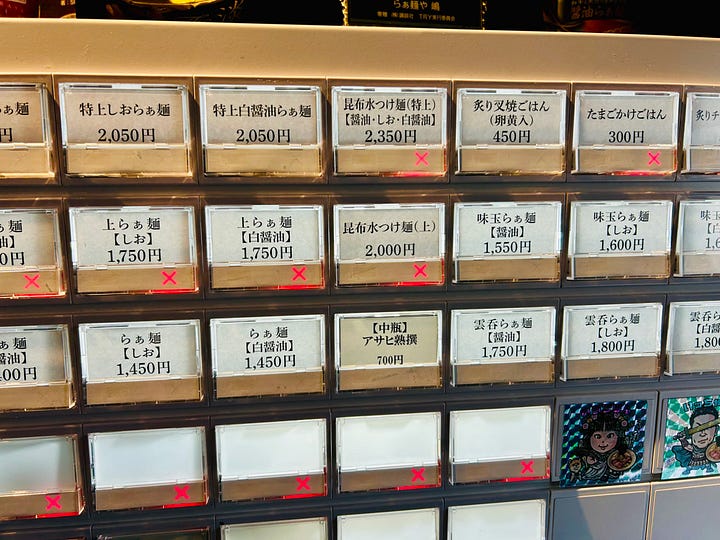
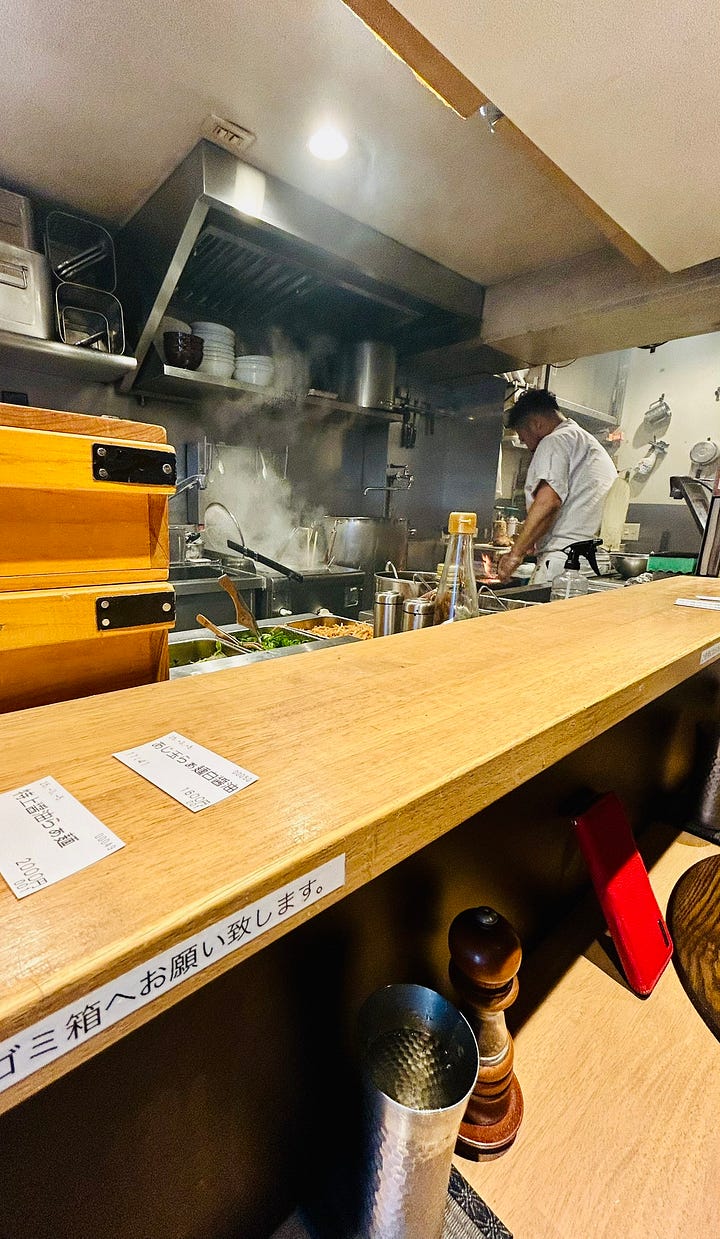
A few minutes later I received this bowl and I excitedly started digging in. Etiquette wants that you should first smell the bowl of ramen, then taste the broth by itself to fully appreciate the complexity, and then finally dig into the noodles.
The dark broth (always dark because of the soy sauce) was dense and complex, not overly fat like a tonkotsu, but with a nice balance between the salty almost nutty shoyu and the rich broth. It’s a clear chicken base broth with some added seafood elements, but chicken is really what you taste here.
The noodles were actually really amazing (best i’ve tried), thin but nicely al dente, slurpable and quite chewy. There were two types of meat on top, a soft melt-in-your-mouth fatty chashu and another similar type of braised meat that was then finished on the charcoal grill so that it had a nice smoky taste. Two pork and shrimp wontons dumplings were hiding under the slices of meat and they were very delicious.
Other toppings included a perfect soft jammy egg, some nori seaweed, negi (kind of spring onion) and some menma (banboo shoots) .
This was my first ramen in Tokyo and hands down the best bowl of ramen I’ve ever had, so flavourful, complex and yet balanced. It was definitely more expensive than your average ramen bowl, it came at 2050 yen (13$) but it was worth every cent…if anything I find it hard to believe something so sophisticated and incredibly skilful can be so cheap.
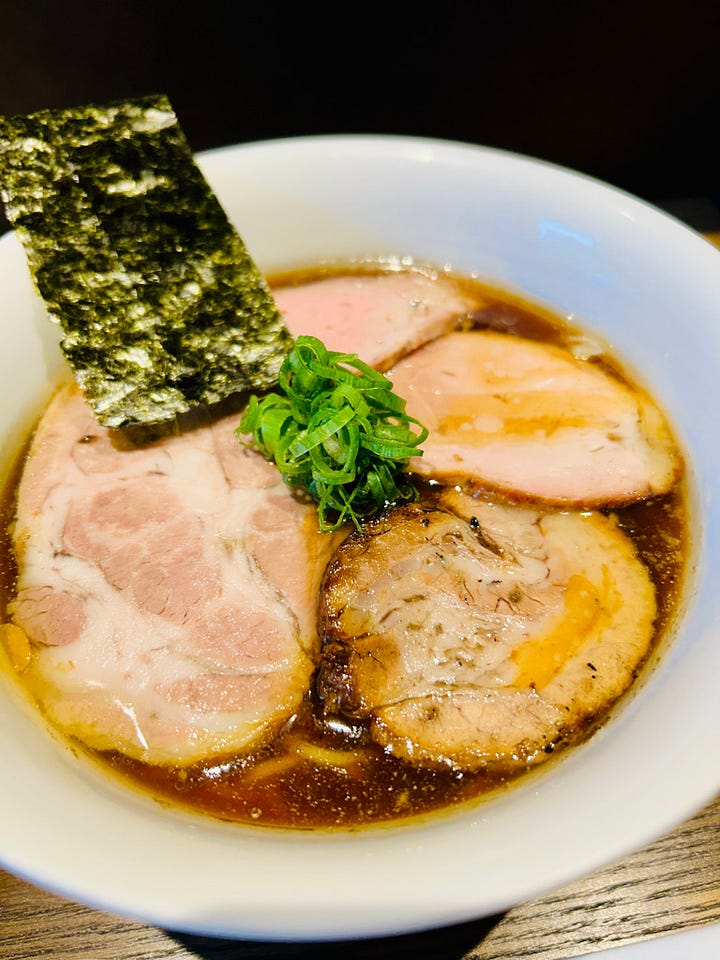
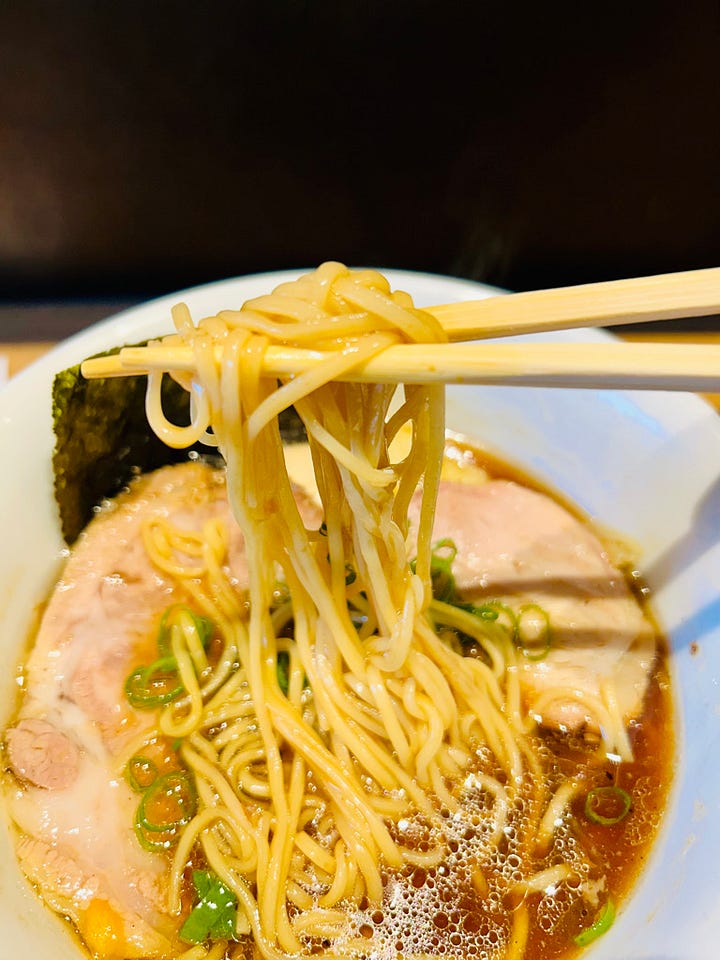
Soba
One of the things I really wanted to experience while in Japan was really high quality handmade soba noodles. I do love the taste and aroma of Japanese buckwheat noodles called soba, and they are not very easy to find fresh ones over here in Europe. During my investigations I came across a place called Sasuga in Ginza, quite close to my hotel and they took reservations at lunchtime. This place was really highly, rated and their website mentioned they make Juwari Soba, i.e. pure 100% buckwheat handmade and cut soba noodles. It’s a time consuming effort and one that takes a lot of energy and expertise. You can see a short video here of the process of soba making in this very restaurant.
Once I sat down I was given a full english menu (this place had 1* on the michelin guide for a long time so I am sure they are used to foreigners).
I was soon confronted with a very difficult choice: hot soba or zaru soba?
Hot soba consists of noodles in a hot broth made with diluted tsuyu (dashi, soy sauce and mirin) and usually accompanied by something else like tempura (Tenzaru soba).
Zaru soba consists of cold noodles that are dipped in a concentrated tsuyu, usually dressed with some negi and wasabi to taste.
Zaru soba is usually more of a summer dish, but it is my favorite way to eat soba. Hot soba is perfect for a winter cold day, and given it was a cold and rainy day in Tokyo, I was more inclined towards this choice. Luckily as I turned to the last page of the menu, I discovered that this restaurant offered a tasting menu with both options so I ordered it right away!
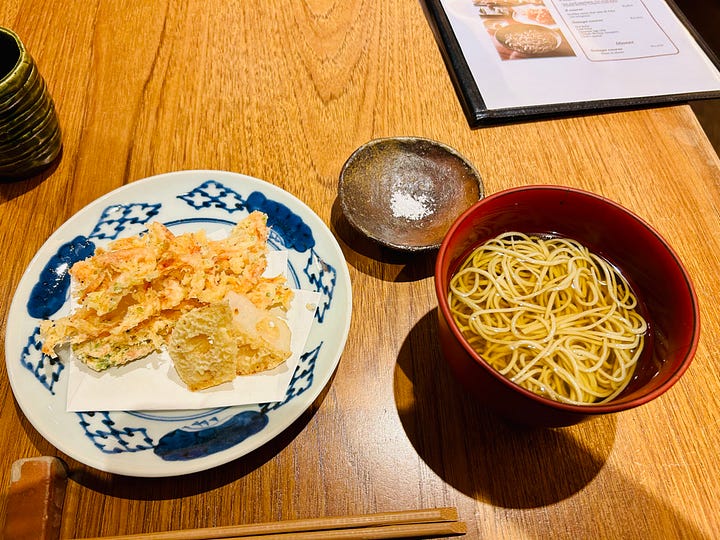
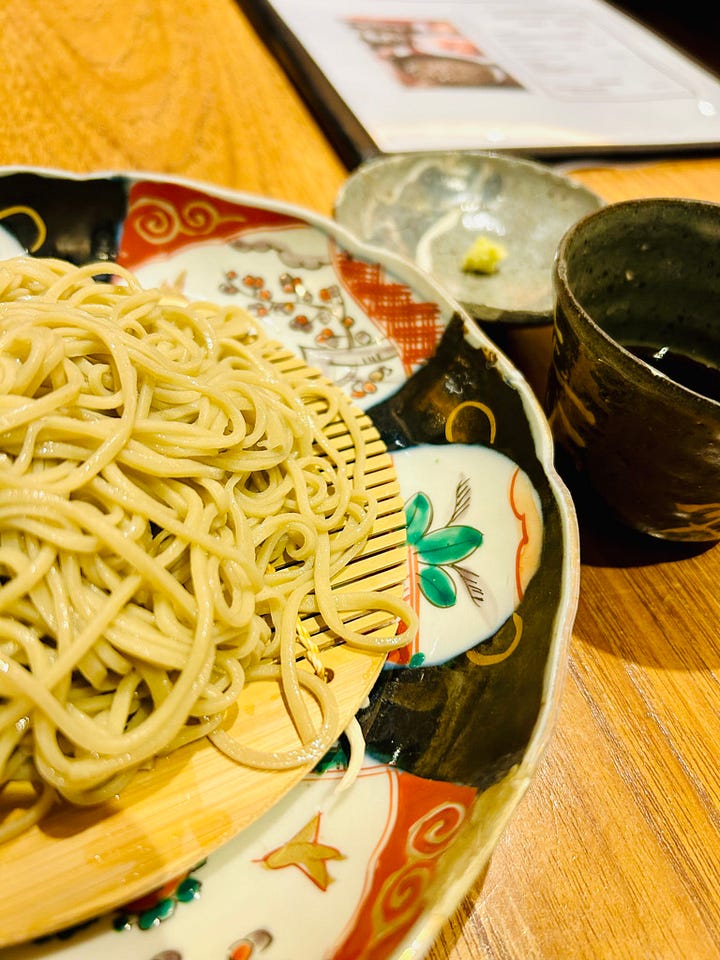
First came a small bowl of hot soba with a side of what they called “pinkish shrimp” tempura. This tiny pink shrimp is known in Japanese as Sakura Ebi, and because of its size, it’s perfect for tempura, as it almost turns into a fritter. It was incredibly crunchy, light and delicious and a perfect companion to the beautiful soba noodles in a very balanced and not too sweet tsuyu. Remember that you are encouraged to slurp loudly in Japan when eating all things noodles, it is not rude but actually a sign of appreciation, and also it helps when eating incredibly hot dishes such as this or ramen.
This would have been a perfect lunch by itself, but I couldn’t have passed on some zaru soba too!
Zaru is the word describing the bamboo basket used to drain the noodles (you can see it on the plate in the picture on the right). The idea with zaru soba is that once the noodles are cooked, they are drained and washed with cold water and then they sit on the zaru and get brought to you. This dish comes with a small cup of concentrated tsuyu that is used for dipping the noodles.
If you are unsure of what is the way to eat zaru soba, please watch this short video:
The most important thing to remember is that at the end you should always ask for sobayu. This is the water in which the soba has been cooking and it’s rich of nutrients which are dissolved from the buckwheat during cooking. You use the sobayu to dilute whatever leftover tsuyu you have, and drink it like it was a cup of soup, and it’s incredibly delicious and heartwarming. I love this end of meal ritual so much and I even bought a little sobayu pot to replicate this when I make soba at home.
Udon and…spaghetti!
And of course I do love some udon noodles, but perhaps these thick and chewy wheat noodles remind me the most about Italian fresh pasta, so I didn’t visit a dedicated udon shop this time around. Instead I had one final bowl of udon at the airport on my way out of Japan. This was a pretty unpretentious, almost canteen style place, in the domestic part of Tokyo Haneda airport and what can I say…the udon were delicious. I ordered a bowl with beef and an onsen tamago (a slow cooked poached egg), and it was probably better than any bowl of udon I’ve had on this side of the world…and it came from the airport for about 5$
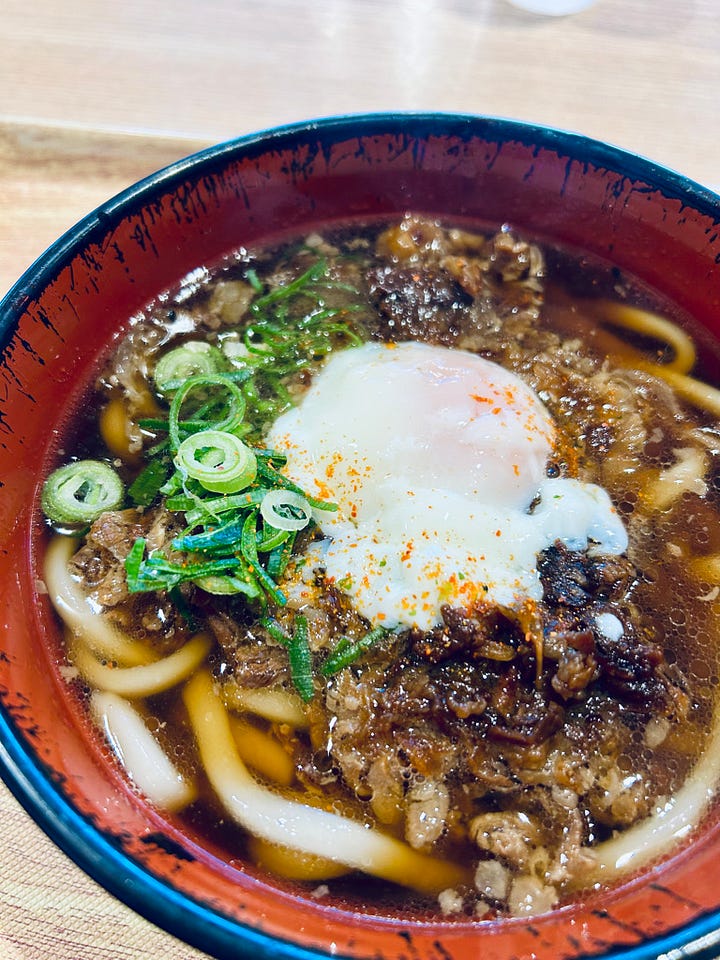
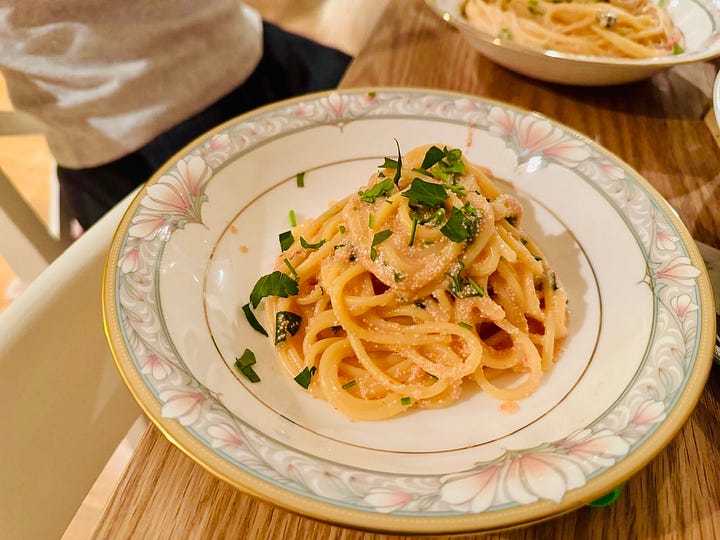
The dish you see on the right here is a plate of spaghetti with mentaiko that I actually cooked for my friends one night. Mentaiko is basically cod or pollock roe that has been marinated in a mix of spices and chilli. Spaghetti are actually quite common in Japan and often served with mentaiko. So during a conversation with my friends, I challenged them that I would make some spaghetti with mentaiko without using any cream (usually used in this dish in Japan). I had a plan to use butter to achieve a nice creamy emulsion, but when I realised one of my friends is lactose intolerant, I decided to go the oily route. So basically I cooked these as if they were aglio e olio, but finished them in the pan with oil to create a starchy and creamy emulsion, and only added the mentaiko at the very end while tossing the pasta (it’s a similar way I would cook them for tuna roe). The result was actually pretty good and everyone loved them!
Tonkatsu
When it comes to frying food nobody does it like the Japanese. I used to say this about Naples all the time but now it’s a tough competition, and as usual the Japanese seem to have brought it to a level of perfection that is hardly comparable (especially when you consider that it’s relatively new to Japan).
I had been told that I needed to try tonkatsu when in Japan, as it is a different level than anywhere else. To be honest the idea of it didn’t necessarily make me super excited, a fried breaded pork cutlet has been perfected by many cultures (including my own), and don’t get me wrong…who doesn’t like it, in a comfort kiddy food kind of way, but somehow given the limited time I had, it seemed almost crazy to spend a whole meal dedicated to it.
So one of my lunches plan failed as I arrived to a famous ramen spot in Ginza, and realised that you couldn’t even stand in line as they were sold out seats for the day (at 10am!). So I wandered around and noticed that by 11am there were a few people waiting for the opening of a restaurant. In Japan it’s a good sign when you see a line, so I looked the place up on google maps (Nishimura) and discovered that it was a small tonkatsu restaurant with a high rating of 3.7* on tabelog. I immediately joined the line and as the shop opened, I managed to get a seat right away at the counter (about 12 seats in total in this place).
Everyone was Japanese here and nobody spoke a word of English…I loved it! It was a real mom-and-pop type of place, with two old ladies in the open kitchen taking orders and preparing the dishes, and one old man frying the pork, that’s it!
The menu consisted of tonkatsu with a set of side dishes and price varied from 7$ to 10$ for the set, according to the cut of meat you wanted.
I opted for the fancier 10$ tenderloin set and about 5 minutes later I had this tray in front of me with two pieces of golden crispy tonkatsu, a bowl of rice, some cabbage (always served here to counterbalance the fried food), some pickles, tonjiru soup (a pork and vegetable miso soup) and some tea. In front of me a selection of sauces: the classic bulldog sauce (a savoury-sweet tangy Japanese sauce that is a must for tonkatsu), Japanese kewpie (the Japanese version of mayonnaise…different and so good!), Japanese mustard, soy sauce and sichimi togarashi (the amazing 7 spice blend you find everywhere in Japan, citrusy and spicy)
I love that in Japan everything is chopstick friendly and even a piece of meat will always come precut to bite friendly size. Needless to say the meat was perfectly cooked, very tender and juicy. Panko breadcrumbs are just amazing for something like this, and the quality is quite different from the panko you get in Europe…so incredibly crispy and with a very irregular rugged surface for extra crunch pleasure. It was fried to perfection and didn’t feel oily and heavy at all.
This was not a fancy place, really a regular spot for people to get their lunch, and once again the level of perfection achieved on one single concept was extremely high. Incredibly satisfying and filling lunch.
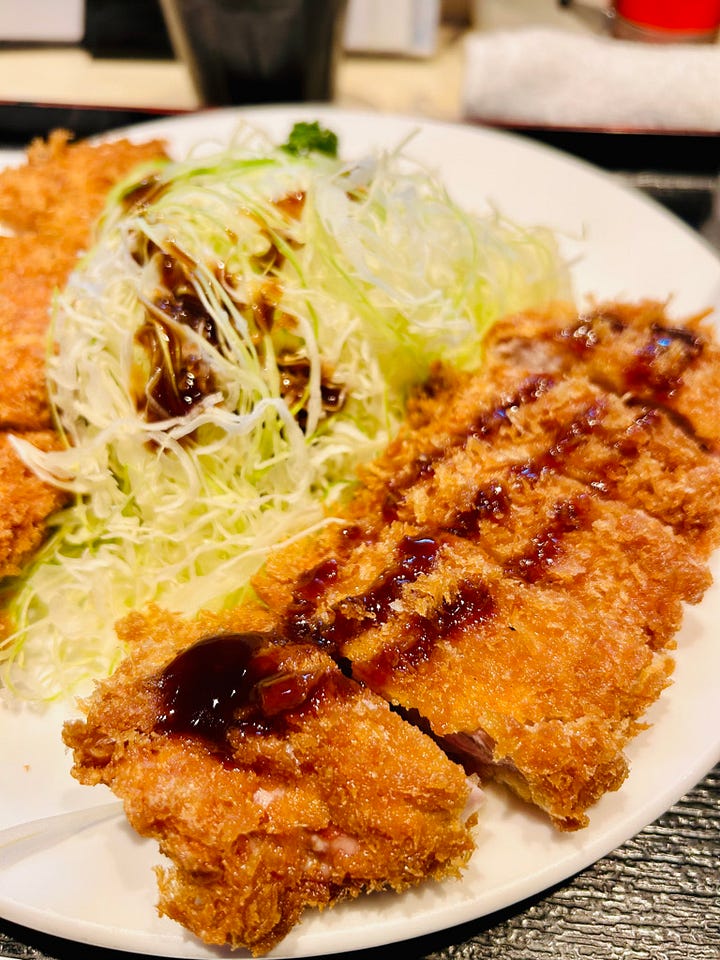
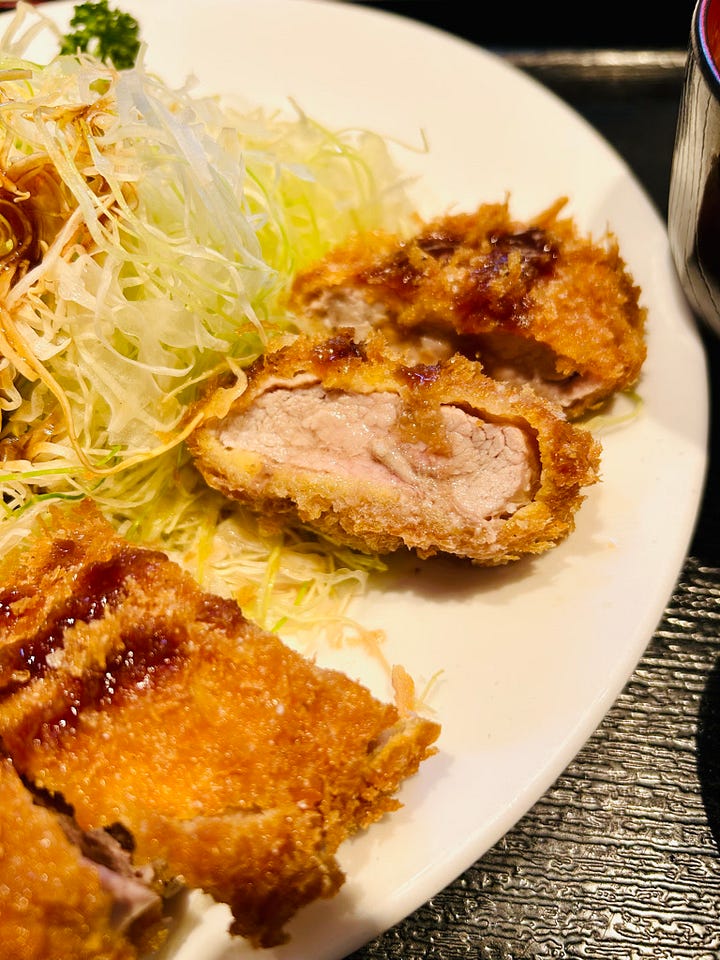
Breakfast
I am not really a breakfast person, and if there is one meal to skip for me it’s always breakfast. When I book myself into a hotel I usually never pay for breakfast, as I am more interested in wandering around looking for a nice coffee and not into having a full meal. Nevertheless we were offered breakfast in the hotel that we stayed in as guests of Blue Note Tokyo, so I took advantage to try classic Japanese breakfast fare.
It is actually my favourite type of breakfast if I need to be honest. What you can see there on the left ended up being my go to choice almost everyday: miso soup (so amazing first thing in the morning!), tamagoyaki (japanese rolled omelette), some salmon and/or mackerel, an onsen tamago (slow cooked poached egg) and some pickles and greens.
Some of the mornings I also had some natto on rice. These fermented soybeans are quite divisive among non Japanese, and usually you love them or hate them. They are sticky, slimy and funky, but delicious…and they don’t seem quite so extreme to me as some people describe them. They are very healthy and considered a superfood in Japan. The whole idea with natto is that you are supposed to whip them with your chopsticks until they become really gooey, and everyone has their own preferred way to do it. If you are new to natto, here’s a quick tutorial:
In the last picture you can see an omelette made by the omelette chef at the hotel breakfast. In Japan they have developed a style of very runny and soft omelette that you often see on top of rice (the Tiktok very popular omurice) and this was definitely in that direction…incredibly delicious!
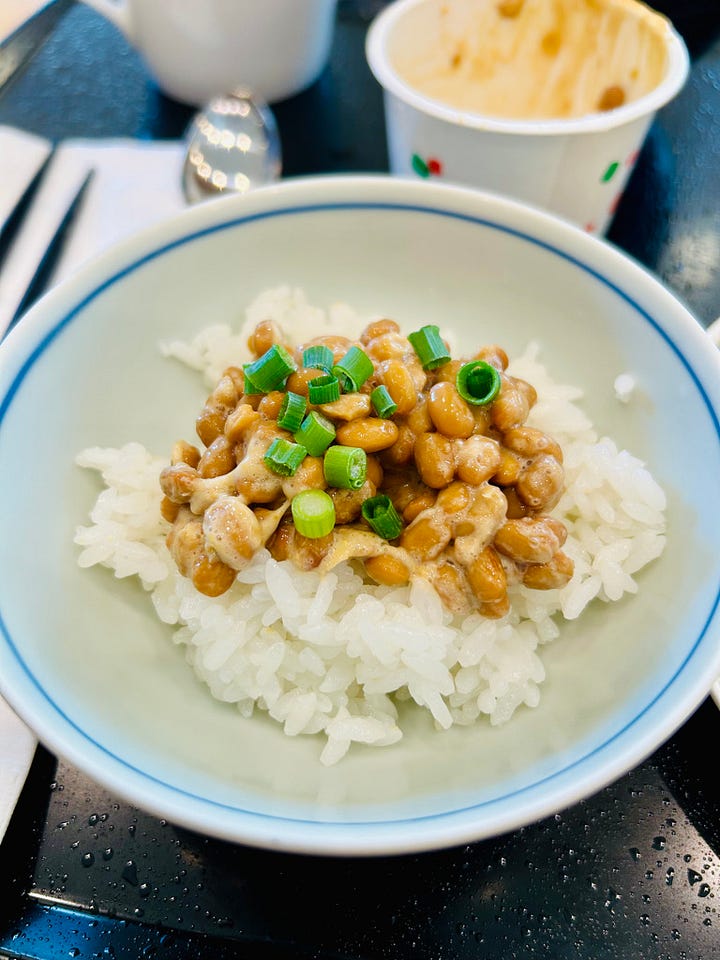
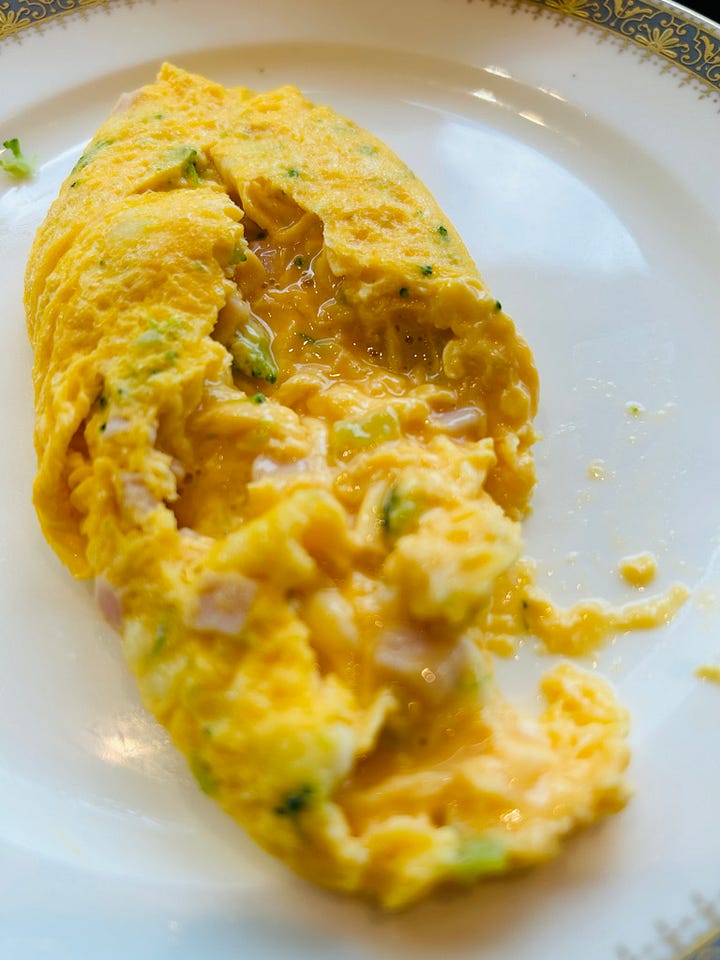
Can I also add that when it comes to eggs, there is nowhere like Japan…
See you for the next instalment where I will talk about some more amazing foods such as unagi and yakitori.










I'm drooling with envy ‼️
Next best thing to being there is to read your descriptions and see your photos.